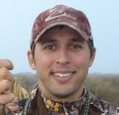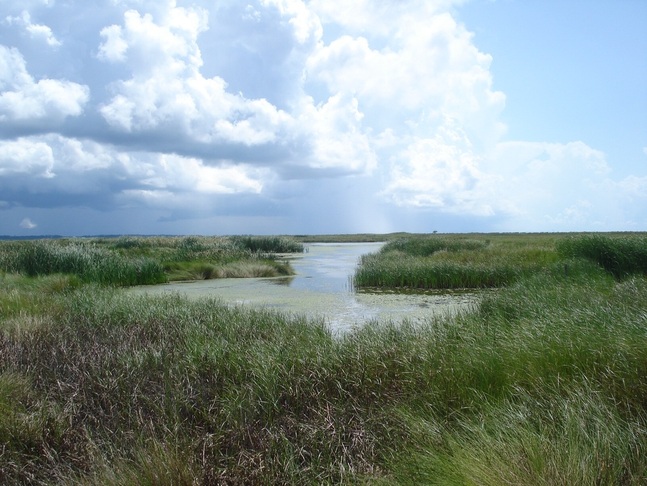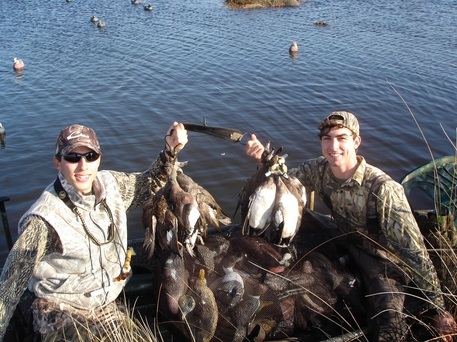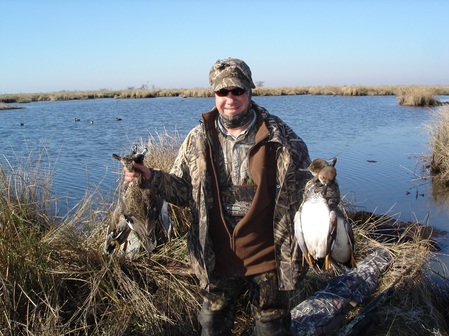 Darren Digby
Darren Digby The idea of public hunting land, for many hunters, is both a windfall and a thorn in the side. Sure it’s a place to go for a few birds, but all too often a few birds in the bag come at the cost of a huge headache from overcrowded acreage. After all, it’s a free place to hunt, and that means free to everyone and often their brother too. Throw in a location in close proximity to a major metropolitan area home to a plethora of passionate hunters and you’ve got a recipe for one chaotic gumbo.
If you’re one of those who rely nearly exclusively on these sorts of areas to pursue our favorite feathered quarry, I feel for you, for I too am what you could call a public land warrior. We’re always looking for that one place where the nearest gunfire is but a distant roll of thunder on the horizon, rather than a stick of dynamite in your backyard. That pond where the birds are pouring in and you can do no wrong with call nor decoy placement to keep them out. With some forethought to the season, you can up your odds of finding such a honey hole all of your own.
Now I know most of you are fired up when the season comes along, when those leaves start turning you start to get the itch to get out the gear and begin scouting missions. However, I’d tell you that you’re already handicapping yourself right off the bat. Sure you’re out there on the water in October and November but where were you in July, August or September?
I’ll tell you one thing, as sick as I am with the waterfowl illness, I’m out in my nearby marshes during these pre-season months. In just a few afternoon sessions afield, you can greatly expand your knowledge of the ins and outs of the area and get a leg up on which areas are holding the most abundant feed for arriving birds.
If you’re one of those who rely nearly exclusively on these sorts of areas to pursue our favorite feathered quarry, I feel for you, for I too am what you could call a public land warrior. We’re always looking for that one place where the nearest gunfire is but a distant roll of thunder on the horizon, rather than a stick of dynamite in your backyard. That pond where the birds are pouring in and you can do no wrong with call nor decoy placement to keep them out. With some forethought to the season, you can up your odds of finding such a honey hole all of your own.
Now I know most of you are fired up when the season comes along, when those leaves start turning you start to get the itch to get out the gear and begin scouting missions. However, I’d tell you that you’re already handicapping yourself right off the bat. Sure you’re out there on the water in October and November but where were you in July, August or September?
I’ll tell you one thing, as sick as I am with the waterfowl illness, I’m out in my nearby marshes during these pre-season months. In just a few afternoon sessions afield, you can greatly expand your knowledge of the ins and outs of the area and get a leg up on which areas are holding the most abundant feed for arriving birds.
 Sometimes a remote location may be difficult to access, such as this one that requires paddling then walking to access
Sometimes a remote location may be difficult to access, such as this one that requires paddling then walking to access Maybe that small trenasse you noticed leads back to a wooded slough? Maybe that small pond is just a tributary to a much larger one that remains out of sight? In my experiences from just spending time looking around, often there is much more to an area that immediately meets the eye. You can review maps all you want but nothing substitutes for time spent getting to know your quarry's turf, you better believe he knows it well!
In my small circle of waterfowling friends, we’ve committed to employing these strategies and in turn have enjoyed some hunts for the ages. One such example comes to mind in particular where a fellow duck fanatic and I found a pond with above average amounts of feed during the summer, which we promptly marked with our GPS units. In the heat of the summer, the resident mottled ducks and wood ducks had the whole area to themselves. This of course is one of our keys to identifying what areas the fall flight will use as they will tend to join up with the resident birds where feed abounds.
Upon return to this area in late October, we weren’t surprised to find it loaded with ducks, mainly early arriving grays, widgeon, and teal. As we glassed them from afar, we knew the area would be a fail-safe opening day spot. However, when the opener rolled around, low water conditions prevented us from reaching the area so we had to settle for coming up short and hunting some decent areas 300 to 400 yards away. All morning long we watched birds pour into that honey hole knowing full well we (nor anyone else) could get to them.
This all changed during a morning hunt the following week. Due to continued low water conditions, we had initially set up in an adjacent area with only two birds to show for our efforts in two hours. As the morning wore on the birds continued to pour into that elusive pond however we noticed the water levels beginning to rebound as a result of a wind shift to a more southerly breeze. Right then and there the decision was made to pack up our dekes and find a way back to that pond one way or another.
Though it took some hard work with exhaustive poling and paddling, we found our way into the pond as the masses erupted from the water. We made our way to a small island for a quick setup, tossing a handful of dekes haphazardly at best. Some were left upside down, side by side, strings wrapped around, but it did not matter as the birds were pouring back in right where they left. We filled our limits within ten minutes and took the time to take pictures basking in the glory of hard work paying off beyond our expectations. And this pond was not done paying us back.
This all changed during a morning hunt the following week. Due to continued low water conditions, we had initially set up in an adjacent area with only two birds to show for our efforts in two hours. As the morning wore on the birds continued to pour into that elusive pond however we noticed the water levels beginning to rebound as a result of a wind shift to a more southerly breeze. Right then and there the decision was made to pack up our dekes and find a way back to that pond one way or another.
Though it took some hard work with exhaustive poling and paddling, we found our way into the pond as the masses erupted from the water. We made our way to a small island for a quick setup, tossing a handful of dekes haphazardly at best. Some were left upside down, side by side, strings wrapped around, but it did not matter as the birds were pouring back in right where they left. We filled our limits within ten minutes and took the time to take pictures basking in the glory of hard work paying off beyond our expectations. And this pond was not done paying us back.
 Darren Digby and Kyle Digby with a quick 2-man limit of grays and wigeon taken at the honey hole.
Darren Digby and Kyle Digby with a quick 2-man limit of grays and wigeon taken at the honey hole. My cousin and I returned to the hole a few days later with high hopes of repeating what the last visit had provided. Fifteen minutes before shooting time, no sign of the masses. But that soon changed as the air around us began to whistle and quack, miraculously on cue right before shooting time. We took turns taking our birds, picking out as many drake widgeon and grays as possible. It was over in an hour and a half but could have just as easily been twenty minutes had we not prolonged the hunt for maximum enjoyment. As we picked up our decoys, the birds continued piling in.
The next morning we were there on time, again with empty skies shortly before shooting time. However right as the legal shooting hour struck, it was déjà vu. We enjoyed non-stop action until we had a three-man limit in hand within an hour’s time. Again, mainly widgeon and grays filled the strap.
The next morning we were there on time, again with empty skies shortly before shooting time. However right as the legal shooting hour struck, it was déjà vu. We enjoyed non-stop action until we had a three-man limit in hand within an hour’s time. Again, mainly widgeon and grays filled the strap.
 Tony Cyprus, Jr. with some birds that were ambushed following thorough pre-season scouting.
Tony Cyprus, Jr. with some birds that were ambushed following thorough pre-season scouting. Since that weekend in early December of the 2005-2006 season which followed on the heels of Hurricane Katrina's wrath, this particular pond has produced memorable hunts though none quite as exciting as those first few. Most notably, the lesson taken from the experience was that scouting for a hard to reach location can certainly be worth the trouble. Less hunting pressure, less human interaction and plenty of feed usually make for ideal refuges for ducks, or really any other game.
With that in mind, every summer and early fall we are out there long before the season starts. We’re searching for the next overachieving locale far from the chaos of those most easily reached. Though the instance above was a waterfowling adventure, the same can apply for plenty of other critters we chase like deer, squirrels, rabbits, hogs, etc. with the common theme being: Are you willing to put in more effort than the next guy in looking for unpressured game? A little extra time in the woods this season just may be the difference maker in putting your next trophy on the wall. Good luck out there!
With that in mind, every summer and early fall we are out there long before the season starts. We’re searching for the next overachieving locale far from the chaos of those most easily reached. Though the instance above was a waterfowling adventure, the same can apply for plenty of other critters we chase like deer, squirrels, rabbits, hogs, etc. with the common theme being: Are you willing to put in more effort than the next guy in looking for unpressured game? A little extra time in the woods this season just may be the difference maker in putting your next trophy on the wall. Good luck out there!


